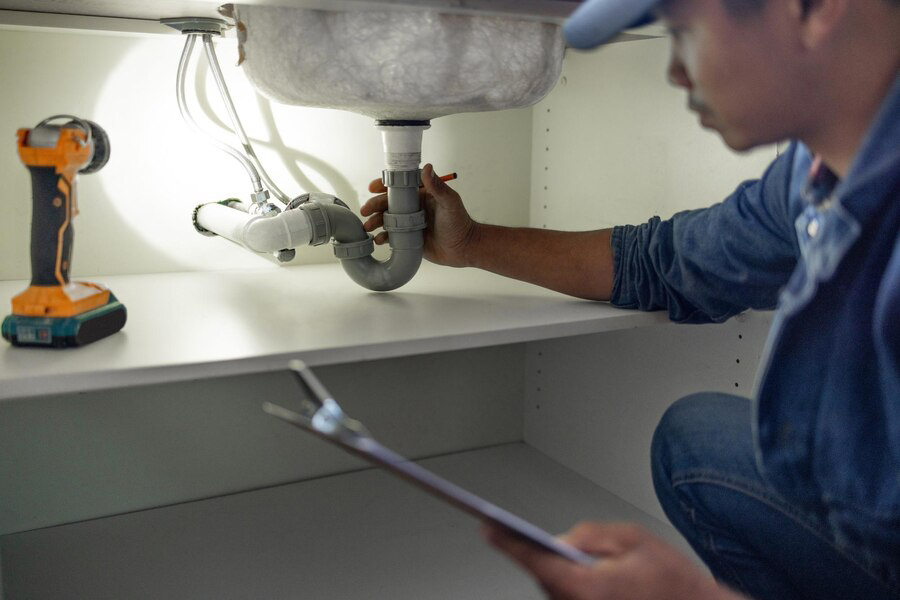As winter approaches, it’s crucial to prepare your home against the harsh conditions that can wreak havoc on your plumbing system. Freezing temperatures pose a significant threat to pipes, potentially leading to costly damage and inconvenient disruptions. In this guide, we’ll delve into essential steps to winterize your plumbing effectively, safeguarding your pipes and ensuring your home remains cozy and functional throughout the colder months. From insulating vulnerable pipes to properly draining outdoor fixtures, there are several proactive measures you can take to prevent freezing pipes. By understanding the risks associated with winter weather and taking appropriate precautions, you can spare yourself the headache of dealing with burst pipes and water damage. Whether you’re a seasoned homeowner or a first-time renter, mastering the art of winterizing your plumbing is an essential skill that can save you time, money, and stress in the long run.
Understanding the Risks: Why Frozen Pipes Are a Problem
As winter approaches, it’s essential to prepare your home for the colder temperatures, and one critical aspect of winterization is protecting your plumbing from freezing. Frozen pipes pose significant risks to your home, ranging from inconvenience to substantial damage and costly repairs. Understanding why frozen pipes are a problem is the first step toward effectively winterizing your plumbing system.

Burst Pipes
The Result of Ice Expansion When water inside a pipe freezes, it expands. This expansion exerts immense pressure on the walls of the pipe, often causing it to burst. Burst pipes can lead to extensive water damage, flooding your home and damaging walls, floors, and belongings.
Water Damage
A Costly Consequence The aftermath of burst pipes is often characterized by water damage. As the ice thaws and water flows freely from the ruptured pipe, it can seep into walls, ceilings, and floors, causing structural damage and promoting the growth of mold and mildew.
Disruption of Water
Supply Frozen pipes can disrupt your water supply, leaving you without access to essential amenities like drinking water, bathing, and sanitation. This disruption can be particularly challenging during the winter months when access to water for heating and other purposes is crucial.
Potential Health Hazards
Beyond property damage, frozen pipes can pose health hazards. Without access to running water, hygiene practices may be compromised, increasing the risk of illness and sanitation-related issues. Additionally, mold growth resulting from water damage can exacerbate respiratory problems and allergies.
Financial Burden of Repairs
Dealing with the aftermath of frozen pipes can be financially burdensome. From repairing the damaged plumbing to restoring water-damaged areas of your home, the costs can quickly add up. In some cases, homeowners insurance may cover part of the expenses, but deductibles and coverage limitations may still apply.
Keeping Things Moving: Tips for Properly Insulating Exposed Pipes
Exposed pipes are particularly vulnerable to freezing during the winter months, making proper insulation essential for protecting your plumbing system. Without adequate insulation, these pipes can freeze, leading to costly damage and inconvenience. In this guide, we’ll explore effective tips for properly insulating exposed pipes to keep them from freezing and ensure the smooth operation of your plumbing system throughout the winter.
Assessing Vulnerable Areas
Begin by identifying all exposed pipes in your home, including those in unheated areas such as attics, crawl spaces, and garages. These areas are especially susceptible to freezing and require extra attention when it comes to insulation.
Choosing the Right Insulation
Materials Select insulation materials suitable for your pipes and the surrounding environment. Common options include foam pipe insulation, fiberglass sleeves, and heat tape. Ensure that the insulation material is rated for the temperatures it will be exposed to.
Measuring and Cutting Insulation
Measure the length of each exposed pipe and cut the insulation material to the appropriate size. Make sure to leave no gaps or exposed areas, as even small openings can allow cold air to penetrate and cause freezing.

Wrapping Pipes Securely
Wrap the insulation tightly around the pipes, ensuring a snug fit. Use duct tape or zip ties to secure the insulation in place and prevent it from coming loose over time. Pay special attention to corners, joints, and bends where pipes are more vulnerable.
Insulating Pipe Fittings and Joints
Don’t forget to insulate pipe fittings, joints, and valves, as these areas are prone to heat loss and freezing. Use insulation sleeves or foam wraps designed specifically for fittings to provide comprehensive protection.
Insulation 101: Protecting Your Pipes from the Cold
Introduction: As winter approaches, it’s crucial to safeguard your plumbing system from the damaging effects of freezing temperatures. Proper insulation is the key to protecting your pipes and preventing costly damage. In this guide, we’ll cover the essential points of pipe insulation to help you keep your plumbing system running smoothly throughout the winter.
- Identify Vulnerable Areas: Begin by locating exposed pipes in unheated areas such as basements, attics, and crawl spaces.
- Choose Suitable Insulation: Select insulation materials like foam pipe sleeves or fiberglass wraps designed for the temperatures your pipes will encounter.
- Measure and Cut: Ensure a proper fit by accurately measuring and cutting insulation to cover the entire length of each exposed pipe.
- Secure Insulation: Wrap insulation tightly around pipes and use tape or zip ties to secure it in place, paying attention to corners and joints.
Conclusion
Preparing your plumbing for the winter months is a crucial step in safeguarding your home against the potential damage caused by frozen pipes. By implementing the tips outlined in this blog, including insulating exposed pipes, sealing any leaks, and allowing faucets to drip during freezing temperatures, you can significantly reduce the risk of pipe bursts and water damage. Remember, proactive maintenance now can save you from costly repairs and inconvenience later.
If you have any questions or need assistance with winterizing your plumbing, don’t hesitate to contact us at EZI Plumbing. Our expert team is dedicated to ensuring the safety and functionality of your home’s plumbing system year-round. Reach out to us at +61 448467788 or visit our location in Chain Valley Bay. Let’s work together to keep your pipes flowing smoothly, even in the coldest of winters.

